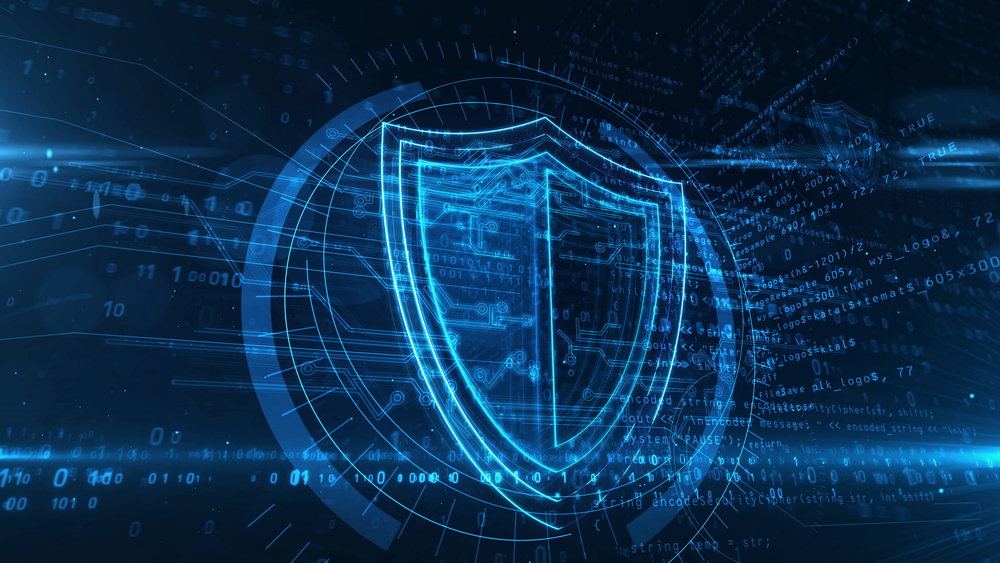Striking the perfect balance between how much cybersecurity you need and how much you should spend can be a tightrope walk.
With cyber-threats and cyber-criminals now using Artificial Intelligence (AI), and getting bolder every day. Cybersecurity is a serious concern for small to medium-sized businesses and local governments.
When it comes to cybersecurity, organizations of every size question how much they need and should invest to ensure adequate protection. Yet, throwing funds at cybersecurity without understanding our needs can lead to wasted budgets and persistent insecurities.
In this article, we will address the complexity of cybersecurity, from identifying your unique needs to strategically allocating your investment.
We’ll cover key components of what it means to have a robust cybersecurity strategy, the implication of not investing enough, and offer some guidance on how to choose the right cybersecurity provider.
We aim to give you a clear picture of how much cybersecurity you need and how much to invest.
The Rising Tide of Cyber Threats
There’s a big misconception that cyber criminals only go after big corporations. Not true! They’re not picky. They’ll go after anyone. And that includes small to midsized organizations and local governments.
And because these criminals know smaller organizations are vulnerable, they are a prime target.
Real Stories, Real Damage
Let’s talk about real life for a second. Just recently, a small Florida city was hit by a massive cyber-attack. The bad guys got in and took control of the city’s data. They demanded a whopping $600,000 to give it back. That’s a lot of money for a small town!
And that’s not a one-off story. There are loads more. For instance, the folks at an accounting firm in the Midwest were shocked when they couldn’t access their files. Cyber-criminals had locked them out and were demanding money.
The Cloud Confusion

Now, let’s get honest about cloud computing. When cloud storage first appeared, people were over the moon about it. “Put your stuff in the cloud! It’s safe!” they said. But many didn’t get what the cloud was.
The truth is that the cloud is just someone else’s computer. And guess what? Hackers and cyber-criminals can get into those computers just like any other.
What’s the Damage: How much does a cyber-attack cost?
So, how much does a cyber-attack cost a smaller organization or local government? Well, the numbers aren’t pretty.
We’re talking an average of $200,000. That’s enough to put many folks out of business.
And it’s not just money. There’s trust. When customers find out their data’s been snatched, they get jittery. They might take their business elsewhere.
Heads Up and Eyes Open
Okay, let’s wrap this up. Your organization needs to get savvy, fast. Cyber threats are not just big business problems. They’re everyone’s problem.
You don’t need to be a cybersecurity expert. But you do need to get clued in. Understand the risks, get solid protection, and keep your eyes peeled for cybercriminals.
Knowledge is power … and security. Let’s use it to keep the cyber-attackers at bay.
Understanding Your Cyber-Risk Profile
Identifying the Nature of Your Data
It’s essential for you to understand the types of data you handle. Financial records and banking information are highly sensitive and need to be safeguarded.
Personal information, such as employee and customer details, is equally critical, as identity thieves can exploit it.
Recognizing Your Vulnerability

Small to mid-sized organizations and local governments must acknowledge that they are attractive targets for cybercriminals. In some cases, their security measures may be more relaxed than those in larger corporations, making them more vulnerable.
It is also important to recognize that threats, including employees, can come from external and internal sources.
Navigating the Complexities of Cloud Computing
When cloud computing was introduced, it was embraced rapidly by many, including SMBs and local governments. However, many people didn’t really understand how it worked.
They didn’t recognize that cloud computing stores your information on another computer … it is that simple. But it is important to realize that using cloud services means storing data on third-party servers, which can sometimes increase cybersecurity risks.
Building Your Cybersecurity Profile Begins with a Full Assessment
To understand your cybersecurity risk, you need to conduct a thorough assessment.
This involves understanding the types of data you handle, where it’s stored, and who has access to it. Smaller organizations and local governments must be particularly cautious if they use cloud services and ensure adequate security measures are in place.
Empowering Yourself Through Knowledge
Knowledge is paramount when it comes to cybersecurity. Understanding your cyber risk profile is essential in implementing the right measures to protect sensitive data.
SMBs and local governments must proactively understand and mitigate risks to ensure their data’s security and integrity.
Why SMBs and Local Governments Are Prime Targets?

One of the primary reasons small and medium-sized businesses and local governments are attractive targets for cybercriminals is that they often need more fortified security measures than larger organizations.
This can be due to budget constraints or a need for more awareness about the importance of robust cybersecurity. Consequently, cybercriminals perceive them as easier targets, where they can gain unauthorized access with less effort.
Valuable Data and Lower Defenses
Despite being smaller in scale, smaller organizations handle a wealth of valuable data, including financial records, personal information, and sensitive government documents.
Cybercriminals are aware that this data can be exploited for financial gain or other malicious purposes. The combination of valuable data and potentially lower defenses makes these organizations prime targets.
Common Misconceptions About Cybersecurity for Smaller Organizations
A common misconception among smaller organizations is the belief that they are too small to be on the radar of cybercriminals.
This mistaken belief can lead to a complacent attitude toward cybersecurity. In reality, the size of an organization does not exempt it from being a target; in fact, cybercriminals often deliberately target smaller organizations because they expect less resistance.
“Basic Security Measures Are Sufficient”
Another misconception is that basic security measures, such as antivirus software and firewalls, are sufficient to protect against cyber threats.
However, the landscape of cyber threats is continuously evolving, and more than what was sufficient yesterday may be needed today. Continuous assessment and upgrading of security measures are necessary to keep pace with the changing threats.
“We Don’t Have Anything Worth Stealing”
Many small to mid-sized businesses and local governments may need to pay more attention to the value of the data they possess. They may not realize that data such as customer information, employee records, and internal communications can be highly valuable to cybercriminals for various reasons, including identity theft, fraud, and espionage.
Taking Proactive Steps
Recognizing why you are a prime target for cybercriminals is the first step in taking proactive measures to enhance cybersecurity. It’s imperative to dispel the common misconceptions and understand the value of the data handled by these organizations.
Implementing a comprehensive cybersecurity strategy that evolves with the threat landscape is essential in safeguarding against cyber threats.
Essential Cybersecurity Measures You Must Have

1. The Cornerstones: Firewalls and Antivirus Software
In the realm of cybersecurity, firewalls, and antivirus software are akin to the moats and walls of a castle.
Firewalls serve as the first line of defense, monitoring incoming and outgoing traffic to block unauthorized access. On the other hand, antivirus software is like a vigilant guard, continuously scanning for and neutralizing threats like viruses and malware within the system.
Together, they form a formidable duo that shields your organization’s network and devices from external threats.
2. Strong Passwords: The Unsung Heroes
In our digital age, passwords are often the keys to the kingdom. Strong passwords, a combination of letters, numbers, and symbols, prevent unauthorized access to sensitive data. It’s recommended to change passwords regularly and avoid using obvious choices like “password123” or “admin.”
Multi-factor authentication (MFA), which requires additional verification beyond just a password, can add an extra layer of security.
3. Training and Awareness: The Human Element

Employees are often the gatekeepers of an organization’s data. Therefore, empowering them with the knowledge and tools necessary to recognize and thwart cyber threats is crucial.
Regular training sessions should be conducted to educate employees about cyber threats and how to protect themselves and the organization.
4. Creating a Culture of Cybersecurity Awareness
Building a culture of cybersecurity awareness is essential. This means ensuring that cybersecurity is not just an IT issue but a priority for everyone in the organization.
Regular communication, updates on the latest threats, and encouragement to report suspicious activity can foster a more security-conscious environment.
5. Regular Updates and Maintenance:
Cyber threats are constantly evolving, so the defenses must also evolve. Regular updates and maintenance of all software and hardware are essential to ensure that security features are up-to-date and vulnerabilities are patched.
6. Planning for the Inevitable: Incident Response Plan
Despite the best efforts, breaches can occur. Having a well-thought-out incident response plan can mitigate damage.
This plan should outline the steps to be taken in the event of a breach, including identifying the breach, containing it, communicating with relevant parties, and learning from the incident.
Tailoring Cybersecurity to Your Needs:

Recognizing that there isn’t a one-size-fits-all approach to cybersecurity is crucial. The first step in tailoring cybersecurity to your organization’s needs is to understand your unique landscape – the type of data you handle, the systems you use, and the regulatory environment you operate in.
Assessing the Tools: More Than Just a Checklist
Merely adopting several cybersecurity tools without discerning their relevance can lead to a false sense of security. Evaluating the tools and measures that align with your organization’s risk profile and requirements is vital.
This involves analyzing the kind of data you have, the threats you are most likely to face, and the regulations you must comply with.
The Balancing Act: Security vs. Usability
A common misstep is to ramp up security measures to the extent that it impedes the organization’s operations. The key is to strike a balance. Security measures should be robust enough to protect sensitive data and systems but not so restrictive that they hinder productivity or alienate users.
User-Centric Approach
Consider a user-centric approach to cybersecurity. This means thinking about how security measures will impact the people using them. For instance, complex password policies might be secure, but employees might resort to risky behavior, like writing passwords down if they’re too complicated.
Continuous Evaluation and Adaptation
Cybersecurity is not a set-it-and-forget-it affair. The cyber landscape is ever-evolving, and so should your security measures. Regularly evaluate the effectiveness of your cybersecurity tools and practices. Be willing to adapt and change as needed.
Seek Expert Advice
Sometimes, an outside perspective can be invaluable. Don’t hesitate to seek the advice of cybersecurity experts. They can provide insights and recommendations tailored to your specific needs and industry.
Compliance and Regulations: What You Need to Know

Navigating the legal requirements for data protection can be daunting, but cybersecurity’s essential. Understanding and complying with these requirements shields your organization from legal repercussions and fortifies your defenses against cyber threats.
The ABCs of Data Protection Laws
There’s a plethora of data protection laws that may apply to your organization. Here’s a breakdown of a few common ones:
-
GDPR (General Data Protection Regulation)
If your organization deals with data of individuals from the European Union, GDPR is the big kahuna you need to comply with. It emphasizes the protection and privacy of personal data.
-
HIPAA (Health Insurance Portability and Accountability Act)
For organizations in the healthcare sector in the United States, HIPAA is critical. It safeguards sensitive patient data and has specific requirements for how this data should be handled and protected.
-
CCPA (California Consumer Privacy Act)
If you have customers in California, the CCPA is something you need to be mindful of. Similar to GDPR, it focuses on protecting the privacy of consumers.
The Domino Effect of Non-Compliance
Ignoring compliance can be akin to playing with fire. Here’s what’s at stake:
- Hefty Fines and Penalties
- Reputational Damage
- Legal Proceedings
Staying Ahead of the Curve
Compliance is not static; it’s an evolving landscape. Keep abreast of any changes in data protection laws and adjust your policies accordingly. Build a culture of compliance within your organization.
Seek Legal Counsel
If in doubt, consult a legal expert. They can provide guidance tailored to your organization’s specific situation and industry.
Cybersecurity Costs: How Much Should You Invest

In an age where cyber threats are constantly evolving, allocating a portion of your budget for cybersecurity is a necessity, not a luxury. For small to midsize businesses and local governments, it’s crucial to spend wisely to maximize protection without breaking the bank.
Understanding the Stakes
Before diving into numbers, it’s important to grasp why cybersecurity is essential. A breach can lead to data loss, reputational harm, and, in some cases, the end of the business. Investing in cybersecurity is investing in your organization longevity.
Assessing Your Needs
To allocate your cybersecurity budget effectively, you must assess what you protect. Inventory your data and identify what is crucial. Understand the regulations you need to comply with. This assessment will form the backbone of your cybersecurity budget.
What Percentage of IT Budget Goes To Cybersecurity?
A common approach is to allocate a percentage of your IT budget to cybersecurity. The exact rate can vary, but a range of 10-20% is a common benchmark. However, this isn’t a one-size-fits-all rule. The allocation should be tailored to your specific needs and risk profile.
When working with a limited budget, it’s essential to prioritize. Focus on the most critical assets and risks. Opt for solutions that offer the best value for your money. Sometimes, a combination of smaller, more cost-effective solutions can be more efficient than one expensive tool.
Employee Training: An Investment You Can’t Skip
Educating your employees on cybersecurity best practices is an investment that pays dividends. Human error is a significant factor in breaches, and well-informed employees are your first line of defense.
Reassess Regularly
Cyber threats and your organization’s needs are not static. Regularly reassess your cybersecurity posture and budget allocations. Be adaptable and ready to pivot as needed.
Maintaining and Updating Your Cybersecurity Strategy

In a world where cyber threats constantly evolve, keeping your cybersecurity practices updated and aligned with the latest threats and technologies is vital.
The Dynamic Nature of Cyber Threats
First, let’s recognize that cyber threats don’t stand still. Hackers and cybercriminals are continuously finding new ways to penetrate defenses. Staying ahead means understanding that the cybersecurity landscape is dynamic and requires ongoing attention.
Keeping an Eye on Trends
One of the keys to maintaining your cybersecurity strategy is monitoring trends. This includes staying informed about new types of attacks and advancements in cybersecurity technologies. Subscribe to reputable cybersecurity news sources or join industry forums to keep your finger on the pulse.
Regular Audits: The Health Check-Ups of Cybersecurity
Just as regular health check-ups are crucial for well-being, regular cybersecurity audits are essential for the health of your organization’s defenses. These audits should assess your current cybersecurity measures, identify any vulnerabilities, and suggest areas for improvement.
Patch Management: Staying Up-to-Date
Keeping software updated is a fundamental yet often overlooked aspect of cybersecurity. Regularly update and patch your systems. Unpatched software is like an open invitation for cybercriminals, so ensure you’re not inadvertently rolling out the red carpet for them.
Employee Training: An Ongoing Process
Training your employees shouldn’t be a one-time event. Regular training and awareness sessions should be a cornerstone of your cybersecurity strategy. As threats evolve, make sure your employees’ knowledge does too.
Adjusting to Changes in Your Organization
Your cybersecurity strategy should also evolve with changes in your organization. Your cybersecurity needs will change as your business grows or as you adopt new technologies. Make sure your strategy adapts accordingly.
Documenting and Reviewing Your Strategy
Documentation is crucial. Ensure that your cybersecurity strategy is documented and that this documentation is reviewed and updated regularly. This helps ensure consistency, makes onboarding new staff easier and is essential for compliance with many regulations.
How to Choose the Right Cybersecurity Provider

In the realm of cybersecurity, an in-house approach may not suffice. This is where external support steps in. By outsourcing or consulting experts, you can enhance your cybersecurity posture. Plus, cybersecurity insurance can be a safety net if things go south.
Recognizing the Need for External Support
Before we dive in, let’s address the question: When is it wise to consider external support? If your organization lacks the expertise, resources, or time to manage cybersecurity effectively, it’s a strong sign that external support could be beneficial. Moreover, as cyber threats evolve, having specialized knowledge becomes increasingly essential.
Choosing a Cybersecurity Provider: What to Look For
Selecting a cybersecurity provider is not a task to be taken lightly. Look for providers with a proven track record, industry certifications, and services that align with your needs. Additionally, check for customer reviews and seek recommendations from peers.
Your organization is unique, and so are its cybersecurity needs. Ensure that your chosen provider offers customizable solutions tailored to your specific requirements.
Cyber threats don’t clock out at 5 PM. Choose a provider that offers 24/7 monitoring to ensure your organization is always protected.
In a security breach, a swift and effective response is crucial. Ensure the provider you choose has a solid incident response plan.
Cybersecurity Insurance: A Safety Net
In addition to choosing the right provider, consider investing in cybersecurity insurance. This can protect your organization from the financial ramifications of a cyber-attack.
It’s like an airbag for your cybersecurity vehicle – you hope you never need it, but it’s essential for when the unexpected occurs.
Building a Relationship with Your Provider
Once you’ve chosen a provider, building a strong working relationship with them is important. Regular communication and collaboration are key. Make sure they understand your organization’s goals and risk profile and that you understand how they’re protecting your assets.
Conclusion
We’ve taken a deep dive into cybersecurity, and it’s evident that this isn’t a one-size-fits-all deal. The big question still stands: How much cybersecurity does your organization need, and how much should you spend?
The cyber landscape is ever-evolving, and the right amount of armor is paramount. It’s vital to discern that investing in cybersecurity is not an expense but an essential line of defense.
Assess, Allocate, and Reassess
Understanding your organization’s specific risks and requirements is the foundation. From there, allocating a sensible portion of your budget to cybersecurity is crucial. But remember, it’s not just about throwing money at the problem – it’s about investing wisely.
Cost vs. Value
When determining how much to spend, weigh the potential costs of a cyber incident against the value of your data and reputation. It’s not just about numbers; it’s about safeguarding your organization’s lifeline.
Stay Dynamic
As the cyber climate changes, so should your strategy. Regularly review your cybersecurity expenditures to ensure they align with current threats and
compliance requirements.
Be prudent but be prepared. Too little security leaves you vulnerable, but overspending without strategy is equally perilous. Find that sweet spot where your investments provide the protection your organization needs without breaking the bank.





